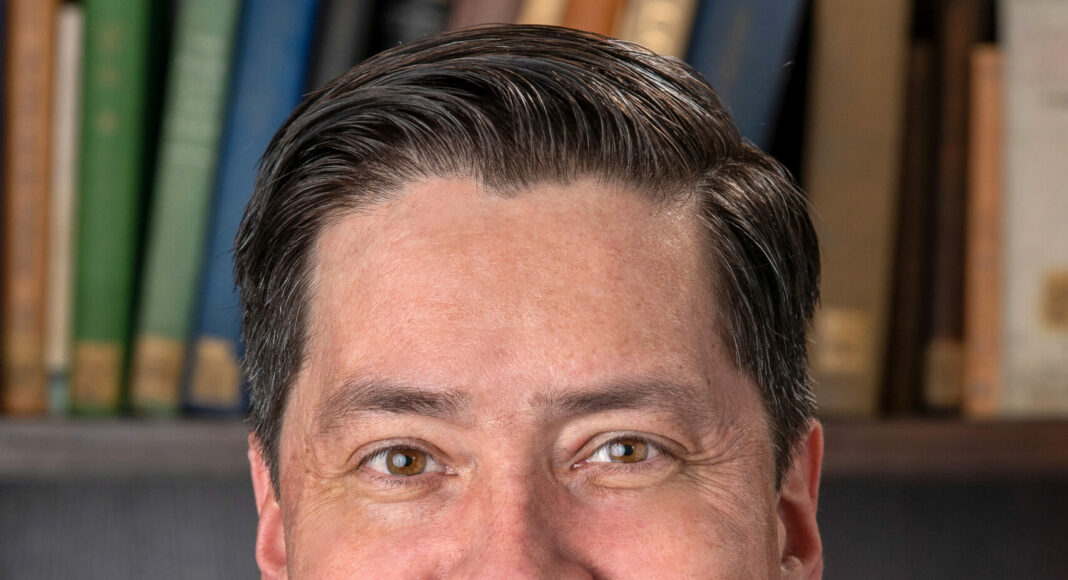In the 1990s, historian Stephen Pitti set out to write a centuries-long counterhistory of the so-called Silicon Valley.
A Chicano scholar with Northern California roots, the author then bristled at a mounting and troublesome narrative: that San Jose’s contributions to history began with the advent of the tech industry. The patterns of inequality in the area had long been striking to Pitti, as well as the persistent, creative efforts of working-class people to transform the region for the better.
“My interest is not in a valley of silicon, or fruit, or mercury, or gold,” he writes in his book’s introduction. “My interest is in a valley of people, shaped by race for centuries.”
Published in 2003, The Devil in Silicon Valley: Race, Mexican Americans, and Northern California would become iconic among community organizers and local history enthusiasts.
This Saturday, Dr. Pitti joins an event co-hosted by San Jose State University and the Martin Luther King Library, focusing on the city’s east side. The gathering brings a panel of academics together, including scholars Josie Méndez-Negrete and Alexandro J. Jara. Like Pitti, they began piecing together the fragmented history of our region in the late 20th century.
My own first brush with Pitti’s work occurred over ten years ago. Chatting with a friend outside a punk show, I shared that I was researching an ancestor who, in the 1840s, journeyed to San Jose from Baja to labor in the New Almaden quicksilver mines. They recommended Pitti’s book for its attention to the time period. Pitti populates the valley of people with notable figures: Californios, braceros, activists, miners and more.
To write his book over 20 years ago, Pitti took a trio of approaches. First, he read up on local histories, particularly those tied to Latinx residents. In addition to dissertations and other papers penned by students, he studied decades of articles in community-based publications in both English and Spanish.
Next, he explored the scant archival resources related to the topic in San Jose and the broader Bay Area. In the 1990s, no one archive had gathered these materials in an organized way.
“There were scattered places one could go,” Pitti tells me. “There were librarians and archivists who knew pieces of the story, but it wasn’t crystal clear on day one exactly how one would even assemble an archive.”
Lastly, he spoke to artists, activists, and other everyday people—as many living locals as he could.
“I realized quickly that history-telling was very much alive in these communities in San Jose.”
Both archives and educational institutions had largely overlooked these residents’ experiences. Not much had been formally written down. Generous community members passed on what they knew of their ancestors and contemporaries.
“People [relayed] the stories of organizations, of what happened on different street corners, of their experiences—both good and bad—in local high schools,” Pitti says. “The challenge was not the absence of stories, but how to actually pull many strands together into a larger narrative that made sense.”
While fortunate to connect with elders who recalled bits of the 1920s and 1930s, he felt saddened to have missed the opportunity to speak to earlier generations.
“Starting the work in the ’90s, in a sense it was too late to capture some stories,” he explains. “So many people who had played incredibly important roles in the region in the early 20th century had already passed away.”
However, even today, struggles for historical recognition and contemporary rights continue to be interlinked in San Jose.
“It’s critical that we continue to look at the past honestly and hear many perspectives on that past, particularly from communities that have historically been marginalized.”
More than an academic exercise, learning from the region’s history can help us address present-day concerns, like how to allocate resources and how government officials can respond to local residents. It can help set the agenda for what universities and other public institutions should focus on in the years to come.
“I continue to be convinced that the history of San Jose is profoundly important for understanding the history of the modern United States.”
Sat, 1pm, Free
Dr. Martin Luther King Library, San Jose
Meeting Room 225



